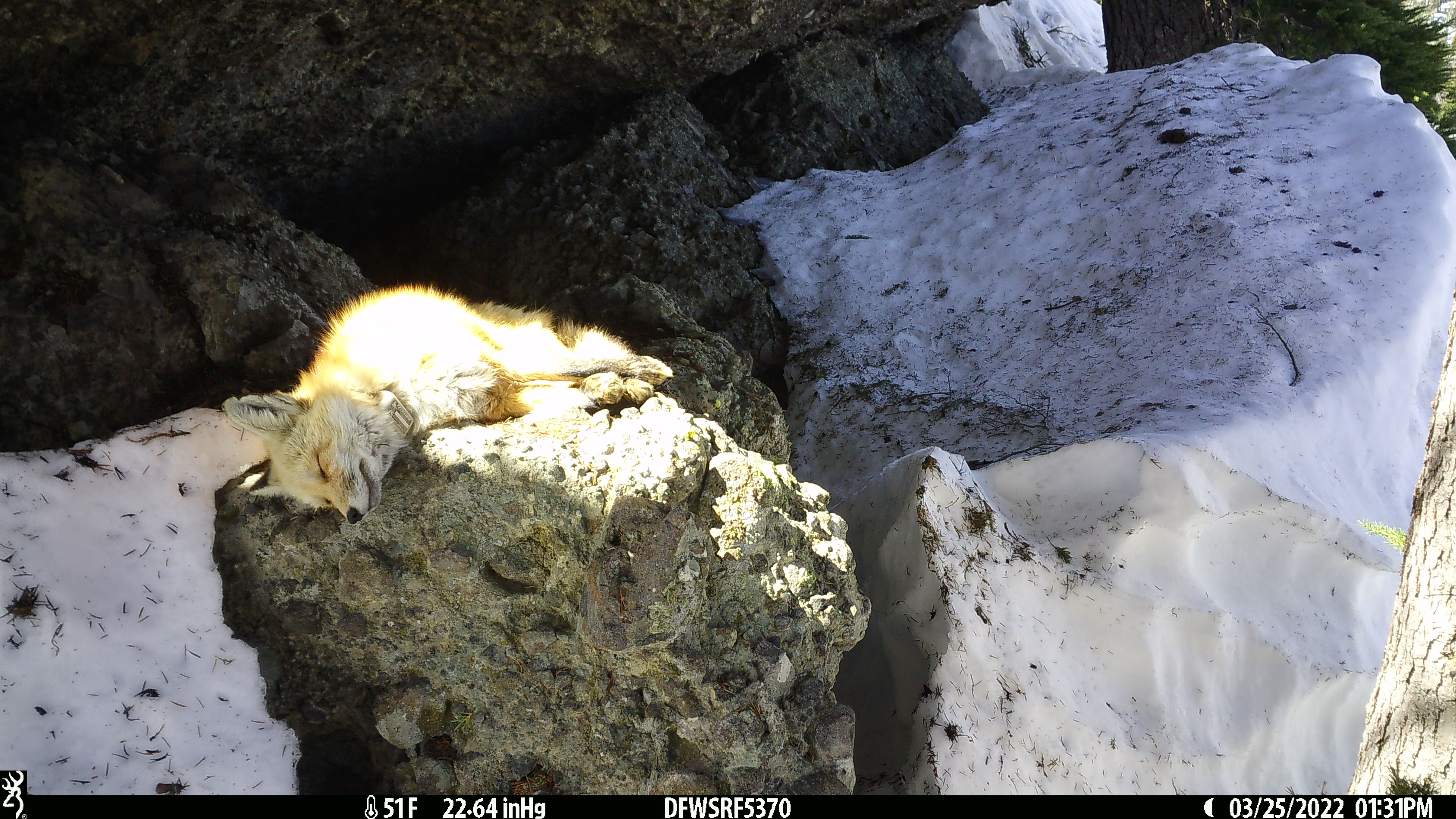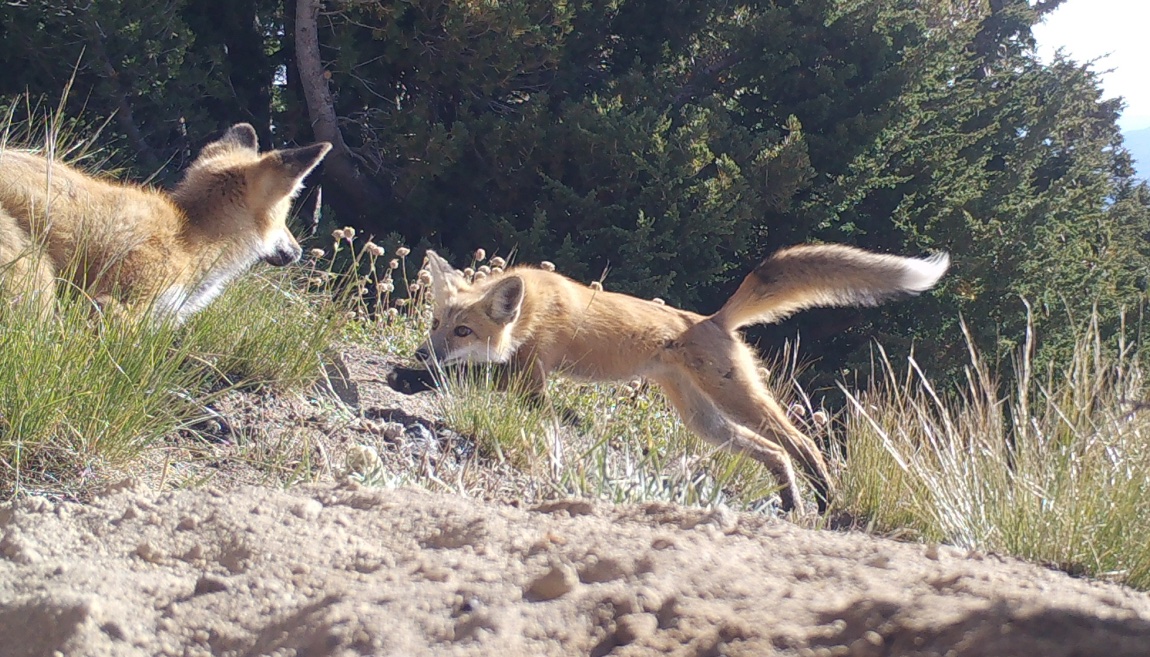A rescue effort can take many forms – a life raft, a firehose, an airlift. For animals whose populations are in decline from inbreeding, genetics itself can be a lifesaver.
Genomic research led by the University of California, Davis, reveals clues about montane red foxes’ distant past that may prove critical to their future survival. The study, published in the journal Molecular Biology and Evolution, examines the potential for genetic rescue to help restore populations of these mountain-dwelling red foxes. The research is especially relevant for the estimated 30 or fewer native red foxes living in the Lassen Peak region of California.
The study found that inbreeding is impacting the Lassen red fox population. Thousands of years ago – long before unregulated trapping and poison knocked back their populations in the 1890s and early 1900s—red foxes were not only abundant in these mountains, they were also more connected to neighboring foxes in Oregon, the Rocky Mountains and Washington Cascades than they are today. This positions them well for genetic rescue should managers decide to pursue it and reconnect the populations.

“Nothing we found disqualifies red foxes from genetic rescue,” said lead author Cate Quinn, who conducted the research as a UC Davis postdoctoral researcher with the Mammalian Ecology and Conservation Unit within the School of Veterinary Medicine. She is now a research biologist with the USDA Forest Service Rocky Mountain Research Station. “The study suggests that genetic rescue could be a viable option for the Lassen population.”
Rescue workers
Genetic rescue is a conservation tool to reverse the effects of inbreeding depression, which is when inbreeding reduces an animal’s fitness and ability to reproduce. Genetic rescue involves bringing new individuals to a population to introduce genetic variation and spur growth.
The tool is not considered lightly, and managers first must understand the severity of inbreeding, the historical baseline genetic rescue seeks to restore, and the deeper evolutionary relationships the foxes share with each other.
To fill those knowledge gaps, the scientists sequenced 28 whole genomes from the four subspecies of montane red foxes. These include small, isolated populations in the Pacific mountains, Oregon Cascades, Lassen Cascades and the Sierra Nevada, as well as a larger population in the Rocky Mountains and a subspecies in the Sacramento Valley. Using genomic technology, the authors could peer back in time to see if a population was always isolated, to what extent, and when that began to change.

Abundant, connected and diverse
The study found high levels of recent inbreeding in Lassen and Sierra Nevada red fox populations, with the Lassen red foxes a high priority for intervention. Only one montane red fox is known to have entered the Lassen population in more than 20 years of monitoring, the study said.
The data also revealed that 10,000 to 12,000 years ago, montane red foxes in the Western United States were abundant, connected and genetically diverse. The Lassen population was likely connected to the Oregon red foxes within the last century, breaking from each other relatively recently, Quinn said.

A hopeful way forward
Combined, these findings point to a hopeful way forward for Lassen’s red foxes, and for other red foxes facing similar challenges.
“We think trapping drove their population down, but we didn’t know what was keeping them small,” said senior author Ben Sacks, director of the Mammalian and Ecology Conservation Unit at the UC Davis School of Veterinary Medicine. “Now we see that what kept them small appears to be inbreeding depression. If what drove their decline is gone, can we bring them back? There is hope here.”
Quinn agrees: “Not too long ago, this was an abundant, connected, diverse population. That diversity still exists. If we were to restore them as a group, these foxes may still have a lot of adaptive potential.”
She cautions, however, that true genetic “rescue” requires reconnecting the whole subspecies — not just growing one population.
“If we only consider each small pocket individually, they’re in trouble, but if we look at the whole montane system, restoration is still possible,” Quinn said.
Additional coauthors include Sophie Preckler-Quisquater of UC Davis and Michael Buchalski of the California Department of Fish and Wildlife.
The study was funded by the U.S. Fish and Wildlife Service, California Department of Fish and Wildlife, and UC Davis.
Media Resources
- Kat Kerlin, UC Davis News and Media Relations, 530-750-9195, kekerlin@ucdavis.edu
- Lisa Bryant, USDA Forest Service Rocky Mountain Research Station, Public Affairs, lisa.bryant@usda.gov
